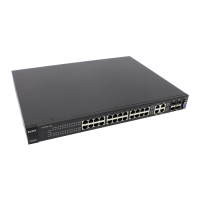
Do you have a question about the ZyXEL Communications GS2200-24 Series and is the answer not in the manual?
| Brand | ZyXEL Communications |
|---|---|
| Model | GS2200-24 Series |
| Category | Switch |
| Language | English |
Manual is for people who want to configure the Switch using the web configurator.
Lists other guides like CLI Reference Guide and Web Configurator Online Help.
Explains how warnings and notes are displayed in the guide.
Details on how product labels, screen names, keystrokes, and symbols are used.
General safety precautions for using the product safely.
Specific warning about replacing fuses with the correct type and rating.
Introduces the main features and applications of the GS2200-24/24P switches.
Provides instructions on how to install and connect the switch.
Describes the front and rear panels and hardware connections of the switch.
Introduces the configuration and functions of the HTML-based web configurator.
Step-by-step instructions for logging into the switch via its IP address.
Describes the first screen displayed after accessing the web configurator.
Recommends changing the default administrator password for security.
Explains how to save configuration changes to run-time and non-volatile memory.
Procedures for reloading the factory-default configuration or resetting the switch.
Instructions on how to properly exit the web configurator for security.
Explains how to confine broadcast frames to a VLAN group using port-based or tagged VLANs.
Details how to add a tag to incoming untagged frames for VLAN forwarding.
Guides on configuring the switch's IP address for management purposes.
Tutorial on configuring DHCP snooping to assign IP addresses to devices.
Tutorial on configuring the switch to forward DHCP client requests to a specific server.
Steps to configure a port as a member of a specific VLAN for DHCP relay.
Steps to enable DHCP relay and add relay agent information to DHCP requests.
Displays port statistics, including link status, speed, and traffic data.
Shows detailed performance data for an individual port.
Displays general switch information like firmware version and hardware monitor details.
Configuration for general settings such as system name, location, and time.
Explains VLANs for partitioning networks and increasing performance.
Configuration for VLAN type, GARP timers, and priority queue assignment.
Configuration of switch IP address, default gateway, DNS, and management VLAN ID.
How to configure multiple IP addresses for switch management via VLANs.
Configuration of individual switch port settings like speed, duplex, and flow control.
Setting priority levels for distributing power to PoE-enabled devices.
Configuration of 802.1Q tagged and port-based VLANs.
Configuration of forwarding rules based on MAC addresses.
Creating rules to filter traffic based on MAC addresses and VLAN groups.
Configuration of STP, RSTP, and MSTP to prevent network loops.
Defining maximum allowable bandwidth for incoming and outgoing traffic on ports.
Limiting broadcast, multicast, and DLF packets per second on ports.
Setting up port mirroring to copy traffic to a monitor port for examination.
Logically aggregating physical links to form one higher-bandwidth link.
Validating access to ports using the IEEE 802.1x authentication method.
Allowing only authorized MAC addresses to pass through a port.
Defining classifiers to group traffic flows based on specific criteria.
Defining actions to be performed on classified traffic flows.
Configuring queuing algorithms to manage traffic under network congestion.
Configuring various multicast features including IGMP snooping and MVR.
Configuring authentication and authorization settings using RADIUS and TACACS+.
Filtering unauthorized DHCP and ARP packets using a binding table.
Configuring the switch to guard against loops on the network edge.
Configuring layer 2 protocol tunneling on service provider edge devices.
How to configure static routes for IP communication.
How to configure Differentiated Services (DiffServ) for QoS.
How to configure DHCP features like relay agents and servers.
Steps to create static routes by specifying destination IP, subnet mask, gateway, and metric.
Enabling DiffServ to apply marking rules or IEEE 802.1p priority mapping.
Configuring DSCP to IEEE 802.1p mapping for traffic prioritization.
Configuring global DHCP relay to forward requests to a single DHCP server.
Configuring DHCP settings based on VLAN domain, including Option 82.
Maintaining firmware and configuration files.
Controlling access to the switch.
Checking system logs, pinging IP addresses, and performing port tests.
Configuring syslog screens for event notification messages.
Managing switches through a single cluster manager switch.
Viewing how frames are forwarded or filtered across switch ports.
Viewing IP-to-MAC address mappings.
Copying settings from one port to other ports.
Screen for managing firmware and configuration files.
Resetting the switch back to its factory default configurations.
Saving current configuration settings to Configuration 1 or 2, or to the current configuration.
Restarting the switch and loading specific configurations.
Upgrading the switch to the latest firmware version.
Restoring a previously saved configuration from a computer.
Saving and storing current device settings to a computer.
Technical background on FTP command line and filename conventions.
Displays the main screen for managing access control settings.
Configuring SNMP settings including version, community strings, and trap destinations.
Specifying types of SNMP traps to send to SNMP managers.
Assigning users who can access the switch via web configurator.
Deciding which services can be used to access the switch.
Specifying trusted computers for managing the switch.
Explains SNMP as a protocol for managing network devices.
Explains HTTPS for secure web access to the switch.
Checking system logs, pinging IP addresses, and performing port tests.
Configuring device's system logging settings.
Configuring a list of external syslog servers to send logs to.
Viewing the switch's role in the cluster and accessing cluster member web configurators.
Configuring clustering management, including setting up a cluster manager and adding members.
How to manage cluster member switches via the cluster manager.
Example of uploading firmware to a cluster member switch via FTP.
Checking if MAC addresses are dynamic or static and viewing MAC table entries.
Viewing IP-to-MAC address mappings in the ARP table.
Copying basic and advanced settings from a source port to destination ports.
Suggestions for solving potential problems encountered with the switch.
Summary of the switch's hardware and firmware features.
Troubleshooting power issues, hardware connections, and LED behavior.
Solutions for forgetting IP address, username, or password, and login screen access issues.
Troubleshooting issues related to losing configuration settings after restarting the switch.
Details on dimensions, weight, power, interfaces, LEDs, and operating environment.
Features and descriptions of firmware specifications like default IP, password, and supported protocols.
Overview of supported features like L2 Bridging, Switching, STP, QoS, etc.
Lists the standards supported by the switch, including RFCs and IEEE standards.
Instructions on how to remove and install fuses for the switch.
Lists commonly used services, their protocols, and port numbers.
Copyright, disclaimer, trademarks, certifications, and FCC/CE warnings.
Alphabetical listing of topics and their corresponding page numbers.
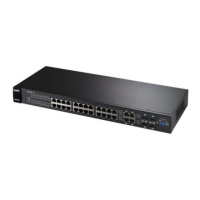

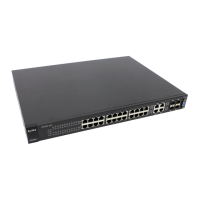
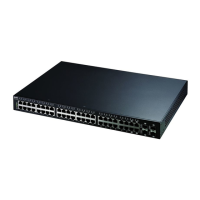

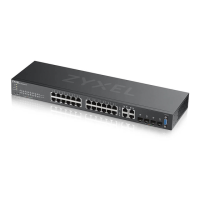




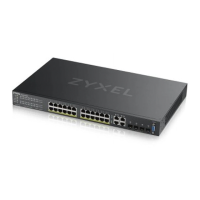
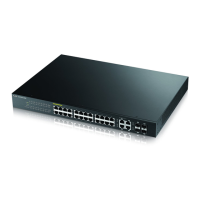
